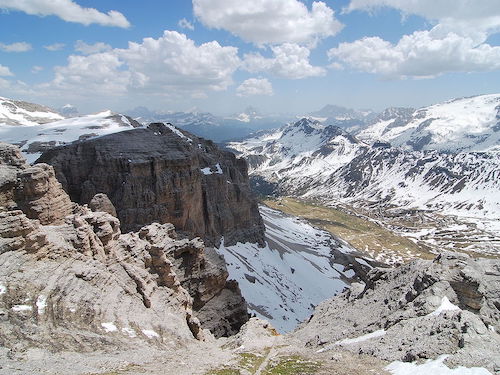The world’s mountain glaciers lost more than 6.5 trillion tonnes of ice to global heating between 2000 and 2023, and the rate of melt is accelerating, finds a groundbreaking study published in Nature.
This equates to an average annual loss of 273 billion tonnes—“about the daily water intake of every person on Earth for 30 years,” says [video] the European Space Agency (ESA), which is working to standardize ice-loss estimates to support global research and monitoring efforts.
“The melting of glacial ice around the world is reducing regional freshwater supplies and contributing to the ongoing rise in global sea levels,” writes the German Aerospace Center, a contributor to the study, describing the recent acceleration in ice loss as “significant and alarming.”
Between 2000 and 2011, glaciers lost an average of 231 billion tonnes of ice per year. That number jumped to 314 billion tonnes per year between 2012 and 2023. Then, in the last seven years of the study, the loss surged past 400 billion tonnes per year.
Central Europe’s glaciers, particularly in the Alps and Pyrenees, have been severely affected, losing 39% of their mass since 2000. Alaska’s melting glaciers account for 22% of the global ice loss, followed by the Canadian Arctic at 20%. Greenland’s peripheral glaciers accounted for 13%, the Southern Andes 10%. The study excludes the continental ice sheets of the Antarctic and Greenland.
The published work culminates nearly three years of collaboration between glaciologists worldwide, involving 450 data contributors from 35 research teams. ESA played a crucial role in reconciling regional estimates across various methodologies, providing a comprehensive picture and a “refined baseline” of glacier loss—a key indicator of climate change. The melting of these glaciers clearly illustrates the impact of ongoing atmospheric and oceanic warming, ESA says.
The 6.5 trillion tonnes of ice lost since 2000 contributed nearly two centimetres to global sea-level rise, writes the Oceanographic Magazine. “Every centimetre of sea level rise exposes another two million people to annual flooding somewhere on our planet,” Andrew Shepherd, head of the geography and environment department at Northumbria University, who was not involved in the study, told the Financial Times.
About two billion people rely on meltwater from glaciers for drinking water and agriculture. Mongabay News reports that the “unprecedented” retreat of tropical glaciers in the Andes intersects with an extended period of drought in the Amazon River Basin, intensifying water scarcity.
The future of the world’s glaciers “strongly depends on emission scenarios,” write the study authors. Even under a low-emission scenario, 25 to 29% of ice mass will be lost. Under a high-emissions scenario, losses could run as high as 54%.
Those findings underpin callsfor concrete action to reduce greenhouse gas emissions and associated warming, “to limit the impact of glacier wastage on local geohazards, regional freshwater availability, and global sea-level rise,” the study authors write.
“Every tenth of a degree of warming that we can avoid will save some glaciers, and will save us from a lot of damage,” lead author Michael Zemp, director of the World Glacier Monitoring Service, told BBC News.








